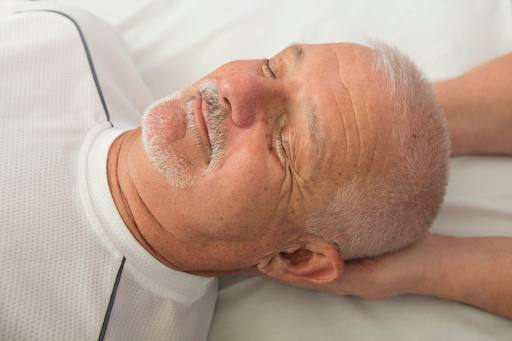Craniosacral Therapy
CranioSacral Therapy (CST) is a gentle, non-invasive form of cranial osteopathy developed by John Upledger in the 1970s to evaluate and enhance the craniosacral system, the brain’s environment and spinal cord function.
Purposes of Craniosacral Therapy
For many people, craniosacral therapy (CST) benefits include alleviation from symptoms including headaches and neck discomfort and the side effects of cancer treatment.
Using gentle touch, CST examines membranes and fluid flow in and around the brain. In addition to alleviating pain, reducing central nervous system stress has proven to improve health and immunity.
Hands are gently placed to help loosen the body’s connective tissue, referred to as the “fascia”. This fascia (Latin for “band”) covers a wide range of body parts, from the organs and glands to the nerves, muscles, and blood vessels, as well as the brain and spinal cord. A vast network of connective tissue runs throughout the body; according to CST, every part of the body is connected to every other part.
By increasing natural self-regulation, self-correction and healing, CST is believed to enhance the efficiency of various bodily functions and processes. People of all ages may benefit from the treatment.
What conditions can craniosacral therapy (CST) help?
- Chronic pain
- Fibromyalgia
- Migraine headache
- Complex regional pain syndrome
- Fascial adhesions
- Multiple sclerosis
- Neuralgia
- Neurodegenerative diseases
- Temporo-mandibular joint syndrome
- Stroke
- Post-concussion syndrome
- Speech impairment
- Epilepsy
Applications
Head, neck, and back compression may be relieved by CST. This may ease pain and tension while also relieving mental and physical stress. It may also aid in regaining cranial movement and easing or releasing head, neck and nerve limitations.
People of all ages may benefit from craniosacral treatment. It may be used to treat other problems like:
- Abdominal pain and constipation (IBS)
- Disrupted sleep patterns causing insomnia
- Scoliosis
- Sinus infections
- Backache
- Chronic ear infections in babies
- Recovering from TMJ trauma including whiplash
- Mood disorders
- Pregnancies that are challenging
Many people have reported success with CST. According to some studies, this therapy helps relieve anxiety in youngsters as young as two years old.
Research also shows that CST may be a successful therapy or an effective treatment strategy for some illnesses in other studies. According to a 2012 research study, it helped decrease migraine symptoms for individuals who had them. According to the results of another study, individuals with fibromyalgia who received CST reported alleviation from their symptoms (such as pain and anxiety).
Steps and Methods
At your visit, you will be asked about your symptoms and any previous medical problems you may have, such as diabetes or high blood pressure. Wear comfortable clothes to your appointment since you’ll be completely dressed the whole time.
There is a good chance that your massage will take an hour or more and that you will start off by laying down flat on your back on the table. Depending on your body type, the practitioner may begin treatment with your head, feet or anywhere in the center.
The provider will gently grasp your feet, head, or sacrum while applying five grams of pressure (roughly the weight of a nickel) to hear their delicate rhythms. They may gently push or move you if necessary to restore the normal flow of the cerebrospinal fluids. While supporting one of your limbs, they may utilize tissue-release techniques.
Some patients report feeling various things throughout therapy, and these are just a few examples:
- A profound sense of well-being
- Falling asleep, waking up with memories or seeing colours and feeling pulsations
- Being “numb” or having a “pins and needles” feeling
- Possessing the ability to feel extreme temperatures
Benefits of CranioSacral Therapy
The central nervous system, which consists of the brain and spinal cord, profoundly impacts the body’s capacity to operate correctly. The membrane and its fluid encircle, protect, and feed the brain and spinal cord, which also significantly impacts the central nervous system.
Every day, your body is subjected to various stressors and strains for which it must find a way to adapt. In many cases, these adjustments tighten the bodily tissues and deform the craniosacral system. Once tension forms around the brain and spinal cord due to these abnormalities, limitations may occur. In the long run, this may hamper the health of your nervous system, as well as any other systems with which it interacts.
It’s a good thing that such limitations may be identified and remedied using easy touch techniques. Practitioners of CST use their hands and a gentle touch to assess the craniosacral system, testing for fluid movement and rhythm in the area around the brain and spinal cord for ease of motion and rhythm. Once the tissues affecting the craniosacral system have been released, soft-touch methods are utilized to relieve any remaining tension.
Craniosacral Therapy may treat a broad range of disorders, from chronic pain and sports injuries to stroke and neurological damage, by restoring balance to the environment surrounding the brain and spinal cord plus improving the body’s capacity to self-correct.
More information on CST can be found online at the Fraser Life Physiotherapy website.
< Previous | Home | Next >



Recent Comments